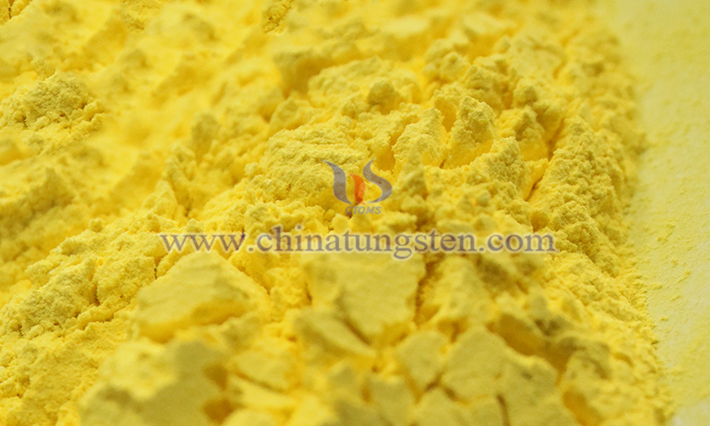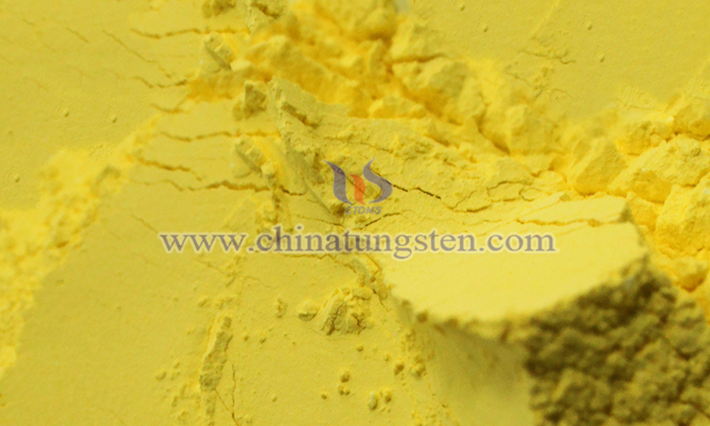Yellow Tungsten Oxide Catalyst: New Material for Green Chemistry Industry
- Details
- Category: Tungsten Information
- Published on Monday, 10 February 2025 17:15
Yellow tungsten oxide (WO₃), as a novel and highly efficient catalyst, demonstrates remarkable potential in various industrial catalysis fields due to its unique physicochemical properties. It not only possesses excellent photoelectric properties but also plays a crucial role in key areas such as environmental governance and energy conversion, offering new possibilities for the development of the green chemical industry.

I. Catalytic Properties of Yellow Tungsten Oxide
Yellow tungsten oxide boasts a unique crystal structure and electronic characteristics, with its surface rich in active sites that can effectively adsorb and activate reactant molecules. In photocatalytic reactions, yellow tungsten oxide has a moderate bandgap width, enabling efficient utilization of visible light and achieving high-efficiency separation of photogenerated carriers. This property renders it highly catalytically active in reactions such as photolysis of water for hydrogen production and carbon dioxide reduction.
In the field of electrochemical catalysis, yellow tungsten oxide exhibits good electrical conductivity and electrochemical stability. Its surface is prone to forming oxygen vacancies, which are defective sites that can significantly enhance catalytic activity. It has important application value in new energy devices such as fuel cells and metal-air batteries.
Compared with traditional catalysts, yellow tungsten oxide offers higher catalytic efficiency and better stability. In organic pollutant degradation reactions, its catalytic efficiency is 2-3 times that of traditional catalysts, and it is resistant to deactivation, significantly improving reusability.

II. New Breakthroughs in Industrial Applications
In the field of environmental governance, yellow tungsten oxide catalysts have been successfully applied in industrial wastewater treatment. A chemical plant using a yellow tungsten oxide photocatalytic system to treat phenol-containing wastewater achieved a degradation efficiency of over 98%, a 40% improvement compared to traditional treatment methods, with a 30% reduction in operating costs.
In terms of new energy development, yellow tungsten oxide has achieved significant breakthroughs in the field of photolysis of water for hydrogen production. Experimental data shows that its solar-to-hydrogen energy conversion efficiency reaches 8.5%, setting a new record for similar catalysts. This breakthrough provides a new technological pathway for clean energy production.
In chemical production, yellow tungsten oxide catalysts have been successfully applied in several important reaction processes. For example, in a certain oxidation reaction, the use of yellow tungsten oxide catalysts increased reaction selectivity to 95%, significantly reduced by-products, and achieved green chemical production.
III. A New Era for Green Chemistry
The application of yellow tungsten oxide catalysts significantly enhances the environmental friendliness of chemical production. In typical applications, it can reduce energy consumption by over 30% and waste emissions by over 50%, truly achieving the goals of green chemistry.
From an economic perspective, although the initial investment for yellow tungsten oxide catalysts is higher, their long-term use can reduce production costs by 20%-40%.
Looking ahead, with advancements in nanotechnology, the performance of yellow tungsten oxide catalysts will further improve, and their application fields will expand to more fine chemical processes, providing stronger support for the sustainable development of the green chemical industry.
- Chinatungsten Online: www.tungsten-oxide.com
- CTIA GROUP LTD: en.ctia.group
- Tungsten News & Price: www.ctia.com.cn
- Molybdenum News & Price: news.molybdenum.com.cn
- Tel.: 86 592 5129696; Email: sales@chinatungsten.com



 sales@chinatungsten.com
sales@chinatungsten.com